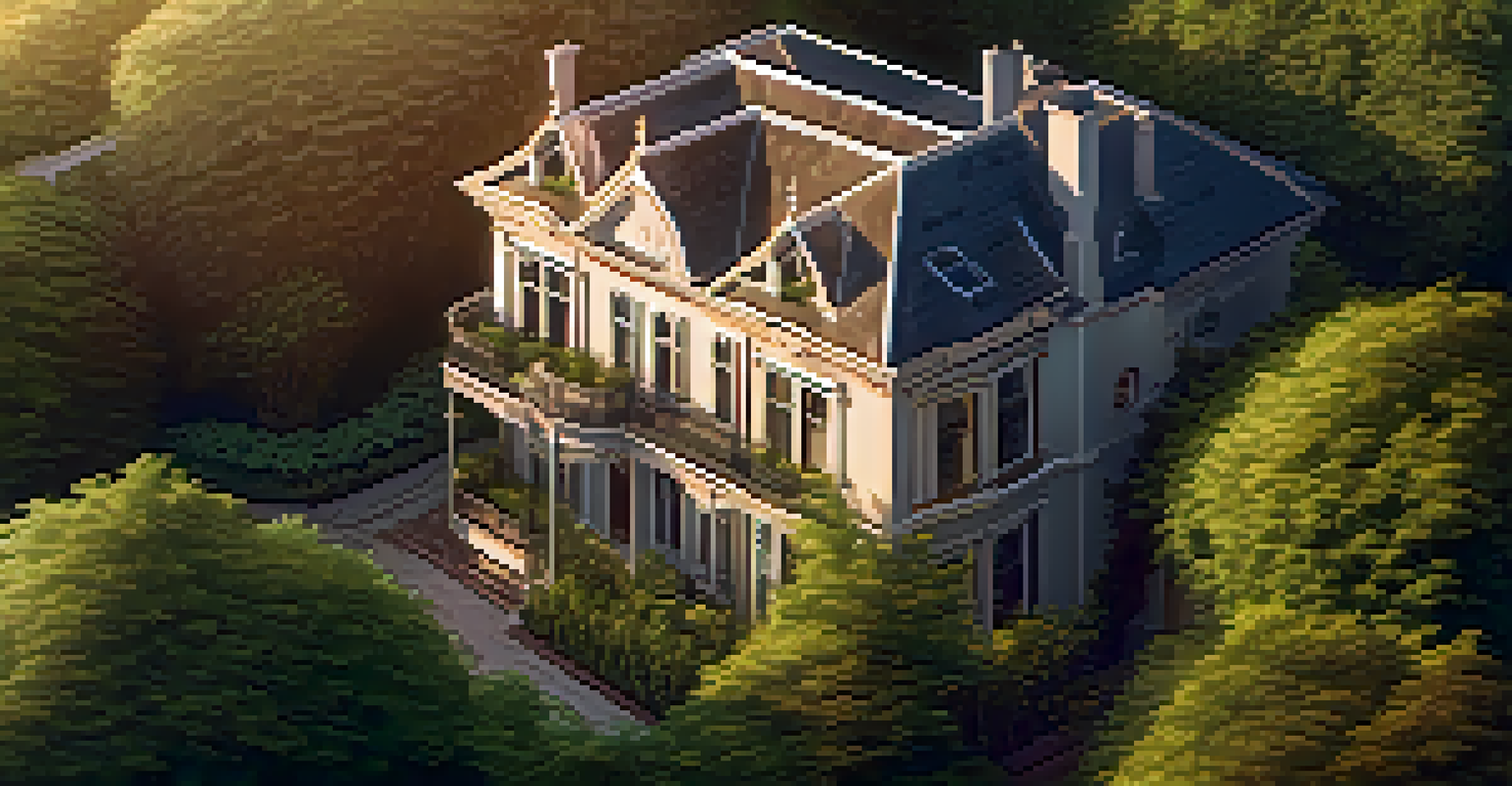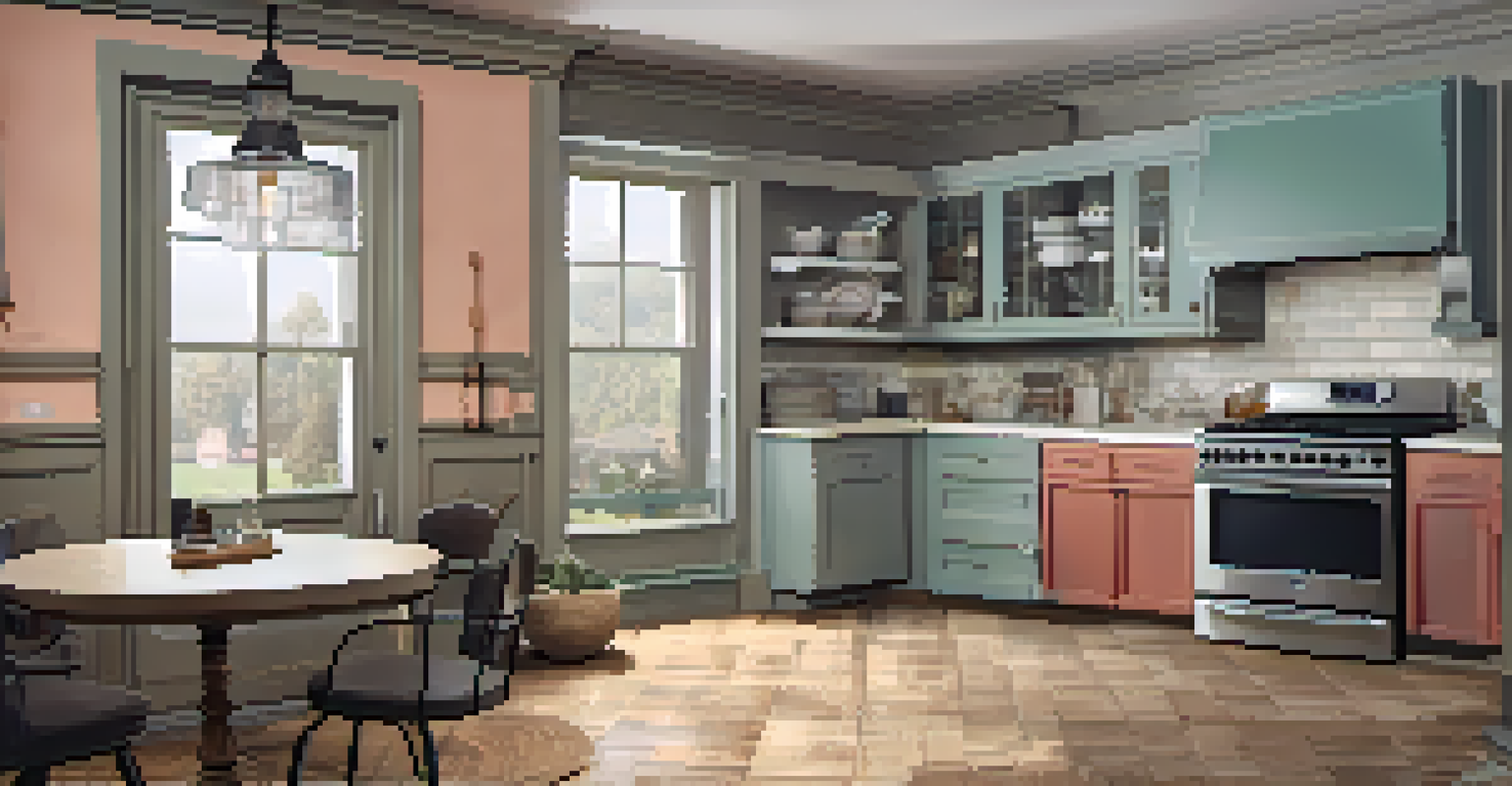Exploring the Use of Technology in Historic Property Renovation

Understanding the Challenges of Historic Renovations
Renovating historic properties is no small feat. These buildings often come with unique challenges, including strict regulations and structural limitations. It’s like trying to fit a square peg into a round hole, where every modification requires careful planning and consideration.
Our past is not a burden; it is a treasure, waiting to be rediscovered and transformed for future generations.
Moreover, historic properties frequently harbor hidden issues, such as outdated electrical systems or crumbling foundations. Identifying these problems early can save time and money down the road. Just like peeling an onion, you often find layers of complexity that need to be addressed.
However, with the right approach and tools, these challenges can be overcome. This is where technology steps in, offering innovative solutions that not only preserve the charm of historic properties but also enhance their functionality.
The Role of 3D Modeling in Property Renovation
3D modeling technology has revolutionized how we approach renovations. Imagine being able to visualize the entire project before a single nail is hammered—this is exactly what 3D modeling offers. It allows architects and developers to create detailed digital representations of a property.

These models help in identifying potential issues that might not be visible in traditional blueprints. For example, a 3D model can reveal how a new layout will affect light and space, making it easier to make informed decisions. This foresight is like having a sneak peek into the future of a renovation.
Challenges of Renovating Historic Properties
Historic renovations come with unique challenges such as strict regulations and hidden structural issues.
Additionally, 3D modeling can facilitate better collaboration among stakeholders. By sharing a comprehensive visual representation, everyone from contractors to historians can weigh in, ensuring that the renovation aligns with both modern needs and historic integrity.
Using Drones for Aerial Assessments
Drones have emerged as invaluable tools in the renovation of historic properties. These flying cameras can capture stunning aerial views of buildings, offering insights that are difficult to achieve from the ground. Think of it as getting a bird's-eye view of a puzzle—sometimes, you just need that perspective to see how all the pieces fit together.
To preserve is to create a bridge between the past and the future, ensuring our heritage is not lost but embraced.
In addition to providing unique visuals, drones can also help assess the condition of roofs and facades. This can be particularly helpful in identifying areas in need of repair without the risks associated with climbing ladders or scaffolding. Safety and efficiency go hand-in-hand here.
Employing drones can also save time and money during the assessment phase. Instead of having a team spend hours inspecting hard-to-reach areas, a drone can do the job in a fraction of the time, allowing for faster project turnaround.
Augmented Reality for Enhanced Planning
Augmented reality (AR) is another exciting technology that’s making waves in historic renovations. With AR, you can superimpose digital information onto the physical world, allowing builders and owners to visualize renovations in real-time. Imagine walking through a historic property and seeing potential changes come to life right before your eyes.
This immersive experience not only aids in planning but also helps garner support from stakeholders. When everyone can see the potential of a renovation, it’s easier to get buy-in from community members and preservationists. It’s akin to showing someone a movie trailer to get them excited about the full feature.
Tech Innovations Transform Renovations
Technologies like 3D modeling, drones, and augmented reality are enhancing renovation planning and execution.
Furthermore, AR can enhance the decision-making process by providing instant feedback on design choices. Want to see what a modern kitchen looks like in a vintage space? AR makes it possible, ensuring that renovations honor the property’s heritage while meeting contemporary needs.
Smart Technology for Energy Efficiency
Integrating smart technology into historic properties is a game changer for energy efficiency. Think of smart thermostats, lighting controls, and energy monitoring systems that can drastically reduce energy consumption. This not only helps the environment but also lowers utility bills—who wouldn’t want that?
However, implementing these technologies requires careful consideration to ensure they don’t disrupt the property’s character. For instance, smart lighting can be designed to mimic the warm glow of traditional fixtures, maintaining the aesthetic appeal while providing modern functionality. It’s like blending the old with the new seamlessly.
Additionally, smart technology can offer invaluable data on energy use, allowing property owners to make informed adjustments. By understanding how energy is consumed, owners can optimize their spaces and make necessary upgrades without compromising the property’s integrity.
Preservation Software for Historical Integrity
Preservation software is becoming an essential tool in historic property renovation. These programs help manage documentation, track restoration efforts, and ensure compliance with preservation standards. It’s like having a digital assistant dedicated to maintaining the historical integrity of a property.
By utilizing preservation software, planners can easily access historical records and previous renovation data. This wealth of information can guide decisions and ensure that any changes respect the building’s original character. It’s similar to consulting a family history book before making changes to a cherished heirloom.
Balancing Preservation and Modernity
Integrating smart technology and preservation software helps maintain historical integrity while improving energy efficiency.
Moreover, these tools can facilitate collaboration among architects, historians, and contractors, ensuring that everyone is on the same page. When all parties have access to the same information, it reduces the likelihood of miscommunication and enhances the overall success of the project.
The Future of Historic Property Renovation
As technology continues to evolve, the future of historic property renovation looks bright. Innovations in materials, techniques, and tools will likely make renovations more efficient and sustainable. It’s like watching a caterpillar transform into a butterfly—there’s so much potential for growth and change.
The integration of technology not only enhances the renovation process but also ensures that historic properties can be enjoyed for generations to come. By embracing modern advancements, we can preserve the past while accommodating the future. It’s a delicate balance that requires creativity and respect.

Looking ahead, we can expect to see even more collaboration between technologists and preservationists. This partnership will help ensure that as we evolve, we also honor the rich history embedded in our built environment, creating spaces that are both functional and meaningful.